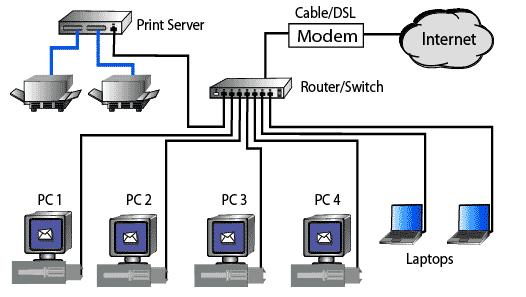What Is a Network Switch and How Does It Work?

A network switch is a fundamental component of computer networks. It acts as a mediator for data transfer between devices connected to the same network. Network switches can come in various configurations, sizes, and speeds, depending on the scope of the network and how it is set up.
At its most basic, a network switch is a hardware device that connects devices using Network, Local Area Networks (LANs) and Wide Area Networks (WANs) protocols. It works by receiving data packets or signals from one device and routing them to another device located on the same network. Network switches also act as “decision-makers” by evaluating incoming data packets and deciding which device to send them to.
There are a few different types of network switches available in the market, including unmanaged switches, managed switches, and smart switches. Unmanaged switches are the most basic and easiest to use. They have a predefined number of ports and require no configuration or setup. They are best suited for small networks as they cannot be configured to prioritize data traffic, like video or voice applications, based on their importance.
Managed switches, on the other hand, provide users with more control and configuration options. They have advanced features, such as Quality of Service (QoS), Virtual Local Area Networks (VLANs), and Routing protocols, which allow users to monitor and manage network traffic more effectively. Managed switches are typically suitable for larger networks, where more fine-grained control over data is needed.
Smart switches, also known as “hybrid switches,” are a combination of managed and unmanaged switches. They provide users with some of the configuration options of a managed switch, but also come with pre-configured options that are more user-friendly. Smart switches are suitable for those who want more customizability than an unmanaged switch but don’t want to spend the extra money for a fully managed switch.
Network switches can also come in varying sizes, and the number of ports will depend on the scope of the network. Larger switches can have over 50 ports to enable the connection of more devices to the network while smaller switches usually have between 4 and 8 ports. The port speed can also differ, with some switches reaching speeds of up to 10 Gbps.
In practice, network switches work by efficiently managing data traffic between different devices connected to the same network. They evaluate incoming signals and route them to the correct device on the network, reducing latency and improving network efficiency. Their ability to prioritize traffic, either based on pre-configured settings or user-defined criteria, is what distinguishes them from other networking devices like hubs or routers.
In conclusion, network switches are critical components of computer networks that facilitate the smooth flow of data communication between devices. They play an essential role in making networks more efficient, secure, and easier to manage. When looking for a network switch, it’s essential to consider the type and configuration of your network to find the switch that best meets your needs.






